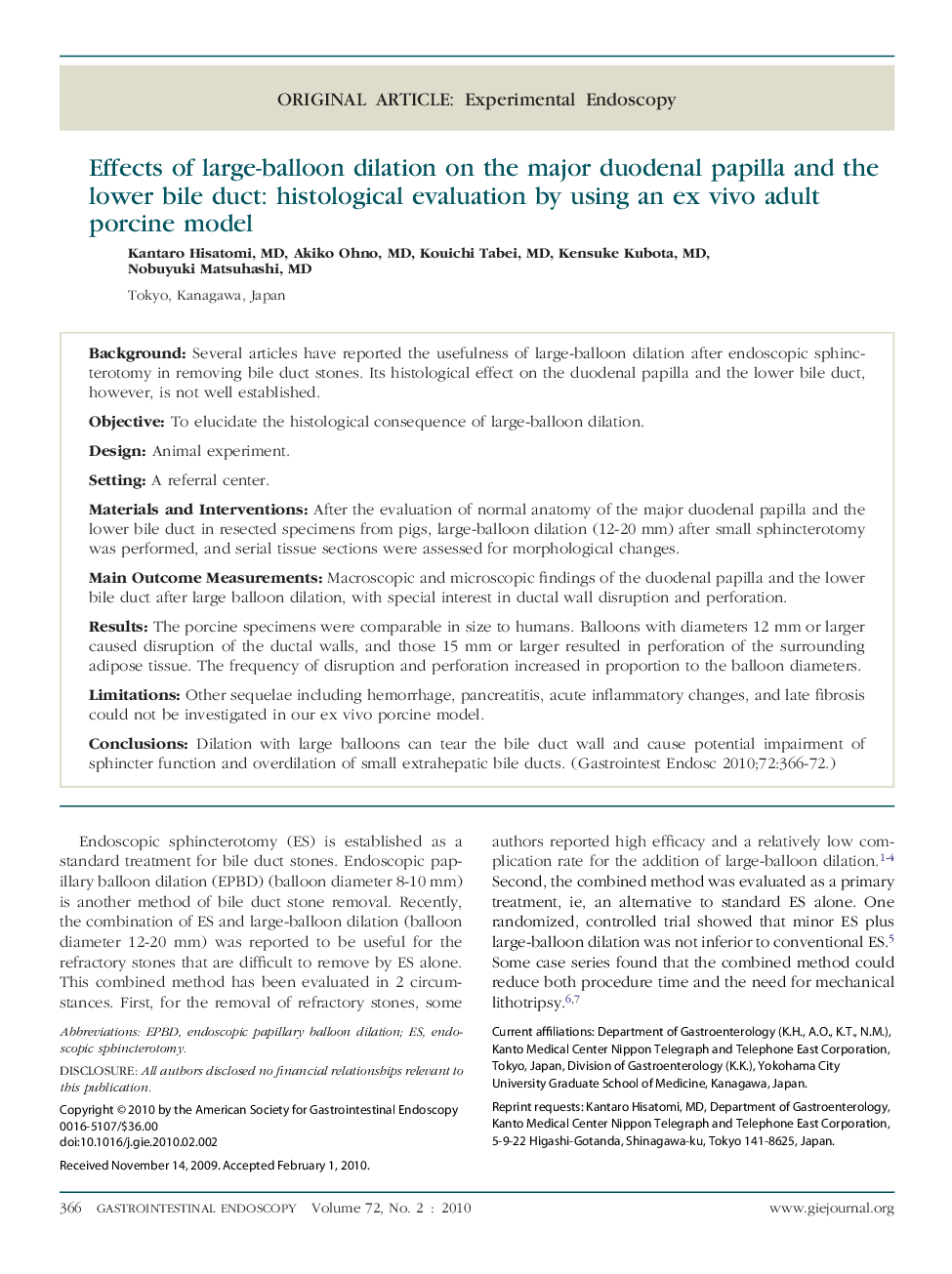| Article ID | Journal | Published Year | Pages | File Type |
|---|---|---|---|---|
| 6098640 | Gastrointestinal Endoscopy | 2010 | 7 Pages |
BackgroundSeveral articles have reported the usefulness of large-balloon dilation after endoscopic sphincterotomy in removing bile duct stones. Its histological effect on the duodenal papilla and the lower bile duct, however, is not well established.ObjectiveTo elucidate the histological consequence of large-balloon dilation.DesignAnimal experiment.SettingA referral center.Materials and InterventionsAfter the evaluation of normal anatomy of the major duodenal papilla and the lower bile duct in resected specimens from pigs, large-balloon dilation (12-20 mm) after small sphincterotomy was performed, and serial tissue sections were assessed for morphological changes.Main Outcome MeasurementsMacroscopic and microscopic findings of the duodenal papilla and the lower bile duct after large balloon dilation, with special interest in ductal wall disruption and perforation.ResultsThe porcine specimens were comparable in size to humans. Balloons with diameters 12 mm or larger caused disruption of the ductal walls, and those 15 mm or larger resulted in perforation of the surrounding adipose tissue. The frequency of disruption and perforation increased in proportion to the balloon diameters.LimitationsOther sequelae including hemorrhage, pancreatitis, acute inflammatory changes, and late fibrosis could not be investigated in our ex vivo porcine model.ConclusionsDilation with large balloons can tear the bile duct wall and cause potential impairment of sphincter function and overdilation of small extrahepatic bile ducts.
